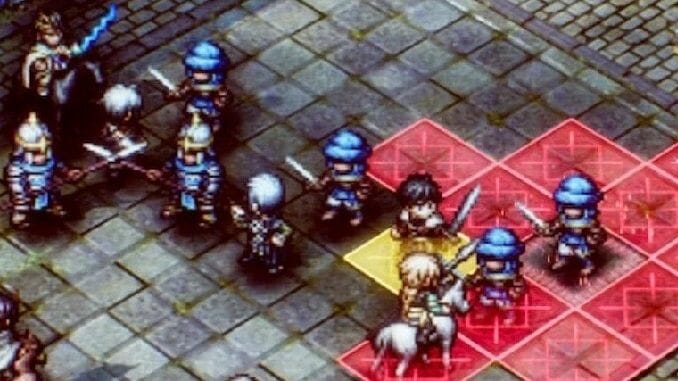Tactical RPG Fans Should Dig the Obtuse Triangle Strategy

Triangle Strategy makes you feel like your decisions matter, whether it’s on the battlefield or in a debate. It frequently goes above and beyond its lackluster English voice acting and glacial start to deliver a story rife with political intrigue and poignant choices. Its style of storytelling threads the needle with expert precision promising to keep most players engaged, even if it’s not as focused on tactical gameplay as it is on story and worldbuilding.
Once it finally gets going, it constantly keeps the player on edge: set on a continent held together by tenuous treaties between dogmatically divergent nations 30 years after an all-out war over salt and iron, war could break out again at any moment. The continent’s three nations—the hyper-capitalist duchy of Aesfrost, the egalitarian holy state of Hyzante, and the Kingdom of Glenbrook, a seemingly idyllic monarchy with a seedy underbelly—are in many ways kept in line by a treaty negotiated the Wolforts, a house with unparalleled martial expertise and political sway among other lords. The main character, Serenoa, and many of Triangle Strategy’s supporting cast hail from House Wolfort.
Each nation and house has a complex relationship with the next, but Wolfort always finds itself in the middle (and eventually the winning side) of each of them. The game doesn’t do the best job of introducing the player to its cast of characters or its world. Instead, it opts to throw a lot at the player rather than easing them in. This makes for an extremely dense, slow start that will turn off many players. Characters’ names and introductions fly on and off the screen at a breakneck pace as worldbuilding interweaves itself into every line of dialogue.
Though this isn’t quite as extreme of an example of an RPG taking hours and hours to finally hook a player, as something like Xenoblade Chronicles 2 might, Triangle Strategy can still be a slog. Its first three or so hours are shakily broken up and redeemed by the battles that take place in-between cutscenes.
The shaky start gives way to a deliberate, almost plodding narrative driven by ambition, politics, friendship and idealism. Triangle Strategy doesn’t just focus on its main characters, either. Brief, optional cutscenes will show up in-between missions that help build the story’s fantastic sense of dramatic irony and bolster its side characters and villains further.
At multiple points throughout Serenoa’s journey, the player is tasked with making difficult choices. Some are minor choices, like determining a plan of attack on an invading army, while others will determine the fate of entire countries. Regardless of the stakes, Triangle Strategy does a fantastic job of not only making the player consider every angle of each decision but making each decision’s impact tangible. This comes from one of the game’s most creative ways of facing a player with a decision: instead of just outright asking the player what they think, they’re supposed to convince others to vote with them.
In these negotiation sequences, the game’s core cast of characters are often in disagreement. Being the leader of the group, though not always the most powerful, Serenoa will opt to bring out The Scales of Conviction: a literal set of scales in which characters will put a token in to cast a vote. The player character doesn’t get a vote, so the actual decision will be entirely dictated on your negotiating skills.
It’s always possible to get your desired outcome, but it’s not always easy. This conceit ties back into the game’s overall narrative really well; it nails the feeling that your decisions have weight, but also that it’s impossible for a politician or ruler to truly please all of their constituents.
As the story progresses, the rippling effects from your choices become waves. The choice you’re forced to make at the beginning of the game’s third act is especially challenging—unlike previous choices, the impact of your decision will clearly have personal implications for members of your party and court.